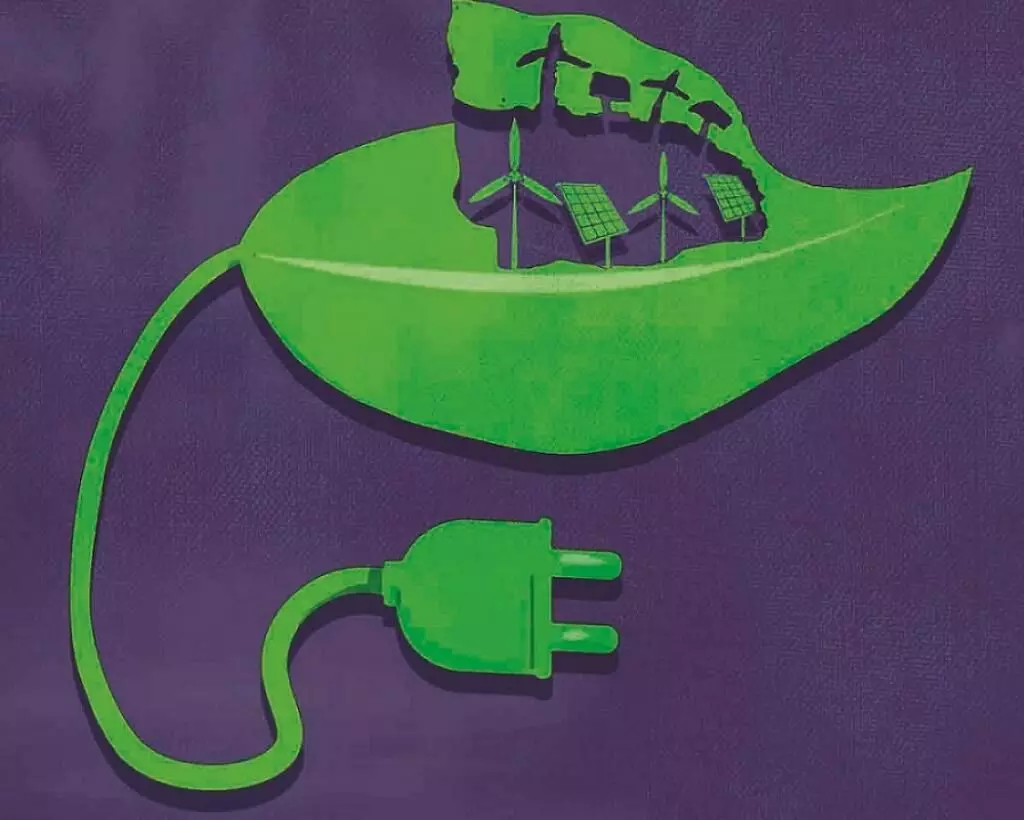Inclusivity in transition
As the world transitions to a green economy, the inherent shortcomings in resource utilisation and its socio-environmental fallouts need to be tackled through an innovative business model

The world is fast-tracking the transition to a green economy. It is moving towards renewables, like solar and wind, to replace coal and gas in energy systems; towards electric vehicles to replace oil for transportation; and towards hydrogen to replace fossil fuels in industry and energy. These are the three big changes expected to drive reduction in emissions in a world that is fast heating up, and with hugely consequential weather disasters.
There is no doubt that the world needs to move with speed and at scale. But what will be the business model that we take to the new green world? I ask this as there are inherent problems with the old model of resource utilisation and its social and environmental fallouts.
Take the issue of mineral extraction—be it coal, iron ore or aluminium. The mining of these raw materials, needed for energy and industry, have led to massive environmental fallouts. In India, as we have painfully found out, this mineral wealth is often under forests, wildlife habitats and, of course, tribal homes. This is why we say this resource curse is about rich lands and poor people. The fact also is that to get to the minerals we need for our economy, we have had to cut forests and displace local communities that had lived in this habitat. The tragedy of this extractive and revenue-generating economic model has been that the people who live on these lands have hardly benefited from the resources. This is the core of what is wrong in our world, not just emissions from these industries that then led us to catastrophic climate change.
I ask this because in the new green economy, the world will still need minerals; though, different ones—lithium, nickel, copper, cobalt, graphite—but still those that are found under forests and, invariably, on the lands of the most marginalised. This is true of not just India but the world. New York-based market consultancy MSCI reports that 97 per cent of nickel, 89 per cent of copper, 79 per cent of lithium and 68 per cent of cobalt reserves in the US are within 55 km of Native American reservations. It is the same in other regions—from Central America to Africa to Asia.
The green transition will mean an exponential growth in the need for these minerals. Will there be a difference in the way we conduct business with the Earth and its people? Battles are already being waged. In the US, for instance, mining majors Rio Tinto and BHP Billiton’s Resolution Copper mine in Arizona has come under fire from indigenous communities because the digging will have to happen on lands held sacred. The story is the same wherever the new gold rush is, across the world, with no new rules of engagement.
In India, we have had a long tryst with making mineral extraction environmentally and socially just—sadly without solutions that work. Years ago, the Supreme Court had ruled in the Samata judgement that no mining can happen on tribal lands without the participation of the tribal people. It meant that, at the least, the tribal people would need to be equal shareholders in the business. But this was negated. Then came the effort to share the revenue from mining with these communities. In fact, the first draft of what then became the District Mineral Foundation (DMF) was to make the communities partners in the business. But this, too, got diluted. The grand idea of sharing benefits or making people partners in mineral development got reduced to an additional cess on minerals. This tax is deposited into DMF and gratuitously used by the government to fund what it would like to see as development, without much participation of the people who live on the land where the minerals are found.
The situation is the same with environment and forest clearances. The objective at one time was to ensure that communities have rights to consent to these projects; that clearance would give weight to their objections to projects in greenfield forestlands. But this protection is being whittled away in the name of growth. It could have helped build a socially inclusive and just green future. The other issue that always led to contests in the old economy was the location of the project—from thermal power to iron smelters—because communities feared that pollution would jeopardise their life and livelihood. The same question is now being raised about the location of windmills and solar projects—that they are in areas inhabited by people or wildlife. The question, again, is this: in our promised green economy, will governments make rules that resolve the conflict in ways that improve local communities and their environment, or will the rush for transition mean more of the same old ways, or even worse? The fact is that the poor never really benefitted from the wealth generated in the old economy. The lands where coal was mined and energy produced still remain without electricity. Will the new economy make sure it is inclusive? Only then can it be sustainable. And if not, then the new economy is not new, or green. DTE
Views expressed are personal




